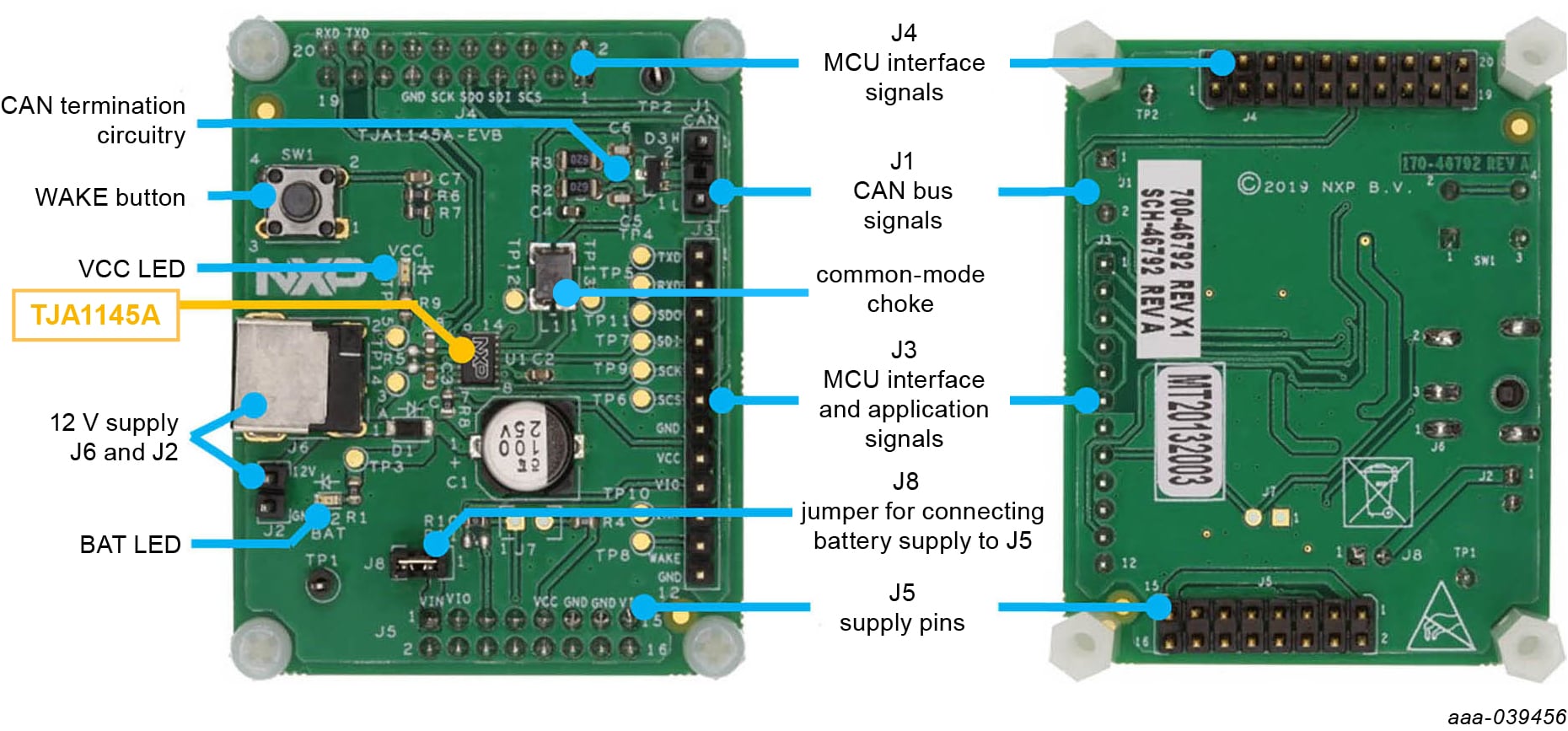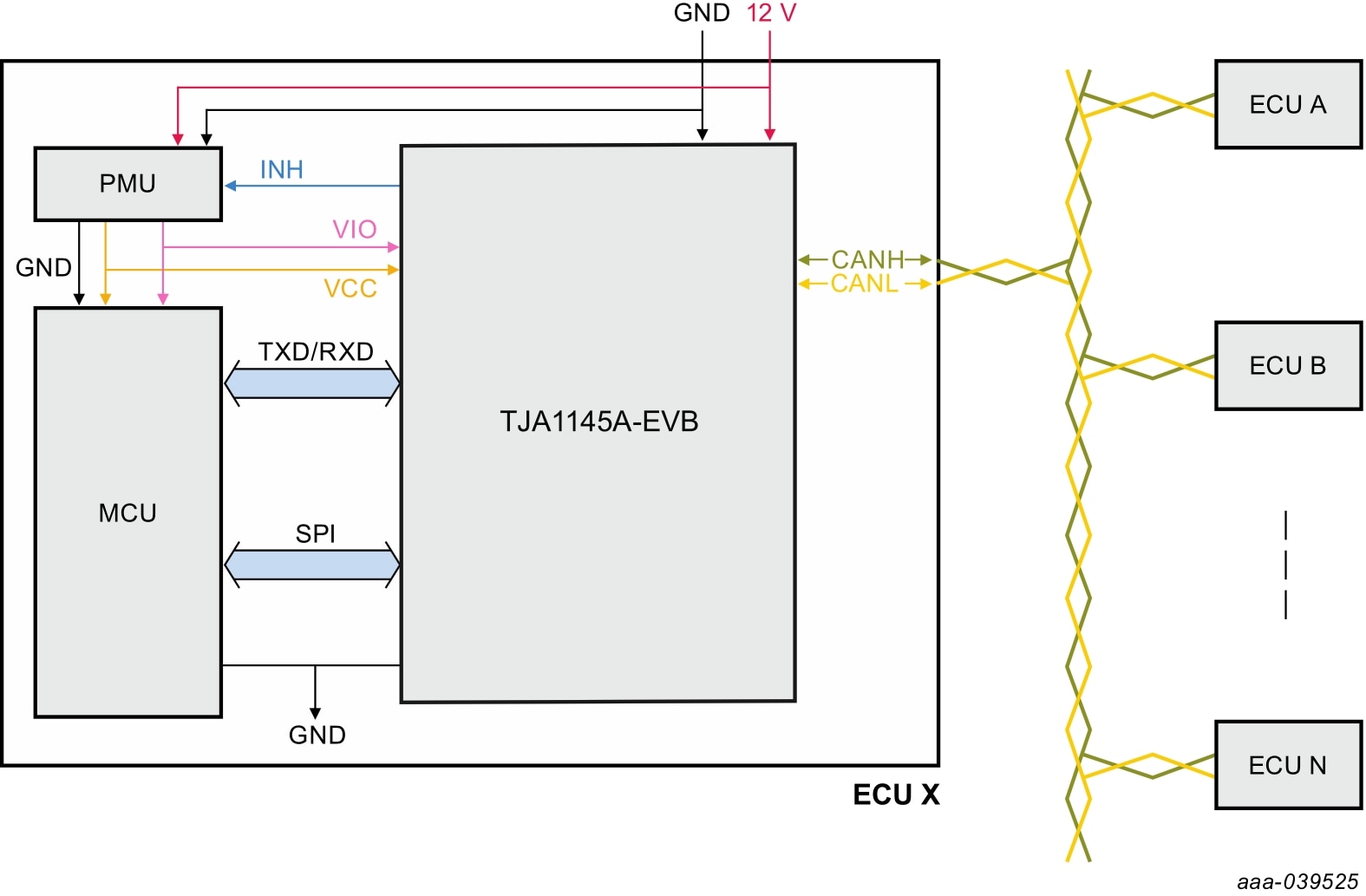Getting Started with the TJA1145A-EVB
Contents of this document
-
Get Started
-
Get to Know the Hardware
-
Configure the Hardware
Sign in to save your progress. Don't have an account? Create one.

Purchase your TJA1145A Evaluation Board
1. Get Started
The NXP analog product development boards provide an easy-to-use platform for evaluating NXP products. The boards support a range of analog, mixed-signal and power solutions. They incorporate monolithic integrated circuits and system-in-package devices that use proven high-volume technology. NXP products offer longer battery life, a smaller form factor, reduced component counts, lower cost and improved performance in powering state-of-the-art systems.
This page will guide you through the process of setting up and using the TJA1145A-EVB evaluation board.
2. Get to Know the Hardware
2.1 Board Description
The TJA1145A-EVB evaluation board is designed to facilitate the testing and evaluation of TJA1145A product features in a variety of microcontroller IO interface environments. All MCU interface signals can be accessed in two ways: they are available at a header row on the top side and also at header rows on the bottom side that can be plugged directly into many NXP MCU evaluation boards.
The TJA1145A-EVB board is designed to be compatible with the S32K1xx evaluation board series from NXP and to support the use of standard software development tools and drivers.
2.2 Board Components
Board dimensions are 45.1 mm x 58.4 mm. Only components needed to support basic TJA1145A functionality are included. The board contains CAN communication, power supply and wake-up circuitry and LEDs indicating when pins BAT and VCC are supplied. It provides several header rows (2.56 mm pitch) for connecting MCU interface and application signals.
3. Configure the Hardware
To connect the TJA1145A-EVB to a CAN network, complete the following procedure.
The following conditions must be met before powering up the system with a 12 V supply:
- Connect all boards in the ECU to a common GND
-
Connect SPI pins to the MCU SPI leader:
- SDI → MOSI
- SDO → MISO
- SCK → SCK
- SCSN → CS
- Connect TXD/RXD pins to the MCU CAN controller TXD/RXD pins
- Connect CANH and CANL to the CAN bus twisted-pair cables
- Connect VCC and VIO to the MCU supply unit; VIO shares the MCU IO supply
- Connect pin INH to the control/enable pin on the ECU supply unit (optional)
Once the above steps have been completed, the ECU/EVB can be powered up using an external battery supply. The TJA1145A-EVB starts up in Standby mode, awaiting commands from the MCU via the SPI interface.
Design Resources
Additional Resources
Tool Summary Page
The tool summary page for TJA1145A-EVB board is at TJA1145A-EVB.
The page provides overview information, technical and functional specifications, ordering information, documentation and software. The Get Started guide provides quick-reference information applicable to using the TJA1145A-EVB board, including the downloadable assets.
References
In addition to our TJA1145A High Speed CAN Transceiver, you may also want to visit:

